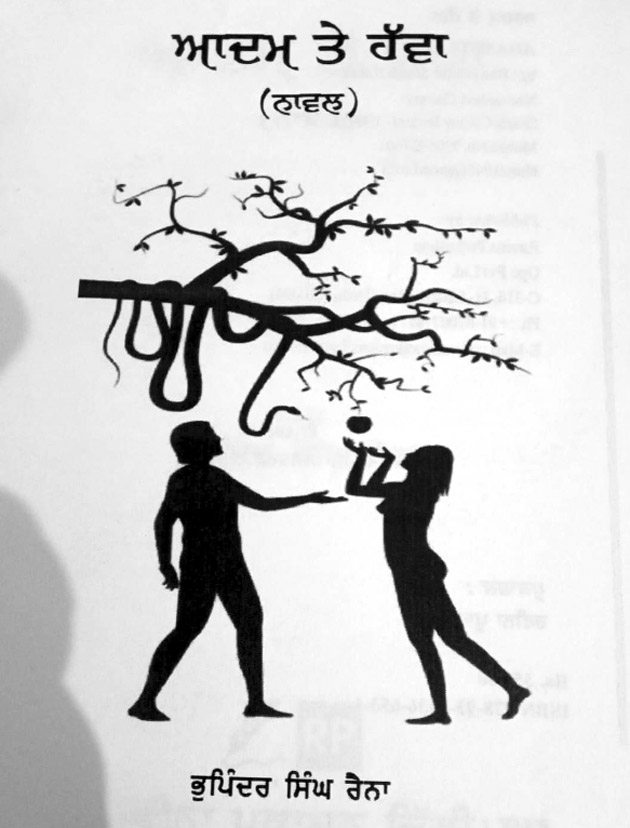Promila Arora
Review of Adam te Hawwa
Author : Bhupinder Singh Raina
Publisher : by Raveena Prakashan
Price : Rs. 350/-
Bhupinder Singh Raina has created a place in fiction in Punjabi literature with ten novels, two dramas, two anthologies: one in Hindi and one in Punjabi, besides these he has translated his own novels in Hindi. When I received his tenth novel named Adam te Hawwa I was curious what type of story it might have contained. Going through this novel was a journey from the advent of first man and woman to present day. The author has tried to establish the importance of woman in man’s life to make his life a heaven or hell.
The author has unveiled this fact introducing different women in the novel. Beant Kaur is a woman, who is committed to her husband and all the members of family. She treats all the brothers of Rattan Singh as her own brothers and their children as her own children, thus creates the atmosphere of peace and harmony in the family. The other woman Kanwaljit Kaur , who is a teacher in a city , proves boon to the family as she educated the children of the family in the city without any discrimination. Thus the children acquired higher education and were well settled. The third woman Veena , wife of Charanjit Singh is a contradiction to the previous ones, who provoked her husband to get the share of property and the property was divided amicably. Being self willed woman, she lost her son and daughters in foreign land. Here the writer warns against the consequences of sending children to foreign following the others.
Stepping forward the author takes the readers to next generation. The next generation is more exposed, free and self willed. Harkirat marries Manpreet, a girl of his choice who is caught red handed in illegitimate relationship by her husband. The author tries to tell that physical lust is ruinous. Harkirat is disturbed and faces mental agony. She seeks divorce and asks for money . It is another aspect of woman’s character in the novel. Then Harkirat marries another woman Komal , who had been divorced from first husband. She is cordial in the beginning but her behavior changes with the entry of her mother and she turns the mother in law and father in law out of her home. Such adamant behavior ruins her son who falls into drug menace. Here Harkirat takes bold step to take his son to his parents. With this step the family is reunited after turning Komal’s mother out.
In writing this novel the author’s purpose seems to teach moral values to the present generation that life can be calm and happy only with co operation and exchange of views in the family with understanding and trust otherwise the younger generation can fall into bad ways as did Harkirat’s son. It reveals several aspects of changing society. Using same name Komal for Harkirat’s both of wives seems a bit odd. Such possibility is not ruled out in real life, but novel contains imaginary story and reader is a bit confused at it. While writing the novel, the impact of Hindi language is seen in some words, establishing the multi-lingual knowledge of the author. The theme of the novel revolves round man and woman, therefore its name is justified. The author’s own comments on the different events in the novel inculcate moral values in the present misled generation.
This novel proves that literature is the mirror of society. I hope it will be well received in literary circles
(The reviewer is a former Principal)
Trending Now
E-Paper


